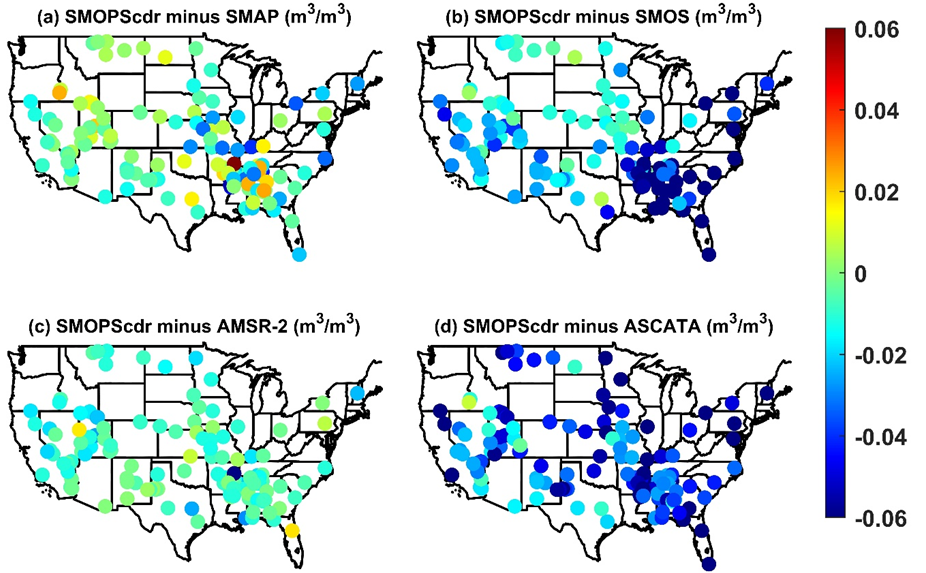
ESSIC/CISESS Scientists Jifu Yin, Jicheng Liu and Ralph Ferraro published a new article last month that discussed their work with NOAA’s Soil Moisture Operational Product System (SMOPS). SMOPS is developed by National Oceanic and Atmospheric Administration (NOAA) to provide the real time blended soil moisture (SM) for Numeric Weather Prediction and National Water Model applications.
Currently, all individual satellite SM data ingested into the current operational SMOPS are scaled to Global Land Data Assimilation System (GLDAS) 0-10 cm SM climatology before the combination. As a result, the useful information from the original microwave SM retrievals could be lost and the GLDAS model errors could be brought into the final SMOPS blended product. Considering the requirements of model-free satellite SM observations are growing, the authors proposed to scale the individual SM retrievals to the Soil Moisture Active Passive (SMAP) data through building regression models. The rescaled individual SM data and the SMAP observations then have similar climatology and dynamics, which allows to produce the SMOPScdr (distinguishing with the current operational SMOPSopr) data using an equal‐weight averaging approach. Allowing the product features to purely depend on readily available microwave SM observations, the method is feasible for operational implementation without requiring ancillary datasets.
With respect to the in-situ SM measurements, the developed SMOPScdr more successfully tracks the surface SM status than the individual satellite SM products with significantly decreased errors. The proposed method also preserves the climatology of the reference SMAP data for the period when SMAP is not available, allowing the researchers to produce a long-term SMOPScdr data product.
Yin is responsible for product development and analysis at NOAA/NESIS/STAR. His research interests include data assimilation, drought monitoring, microwave satellite soil moisture retrievals and land surface model.
Liu is mainly working on research-to-operation transition of land surface remote sensing products at NOAA/NESDIS/STAR. His current focus is on improving NOAA Soil Moisture Operational Products System (SMOPS) by both incorporating new satellite soil moisture products into SMOPS and refining the blending algorithm.
Ferraro is ESSIC’s Associate Director. His current research focuses on the use of environmental satellite remote sensing for both weather and climate studies with an emphasis on precipitation and other hydrological cycle products.
To access the article, click here: “A New Method for Generating the SMOPS Blended Satellite Soil Moisture Data Product without Relying on a Model Climatology”.






